The 5 Best Natural Areas in NYC for Birdwatching During Fall Migration
By Natural Areas Conservancy on October 18, 2024
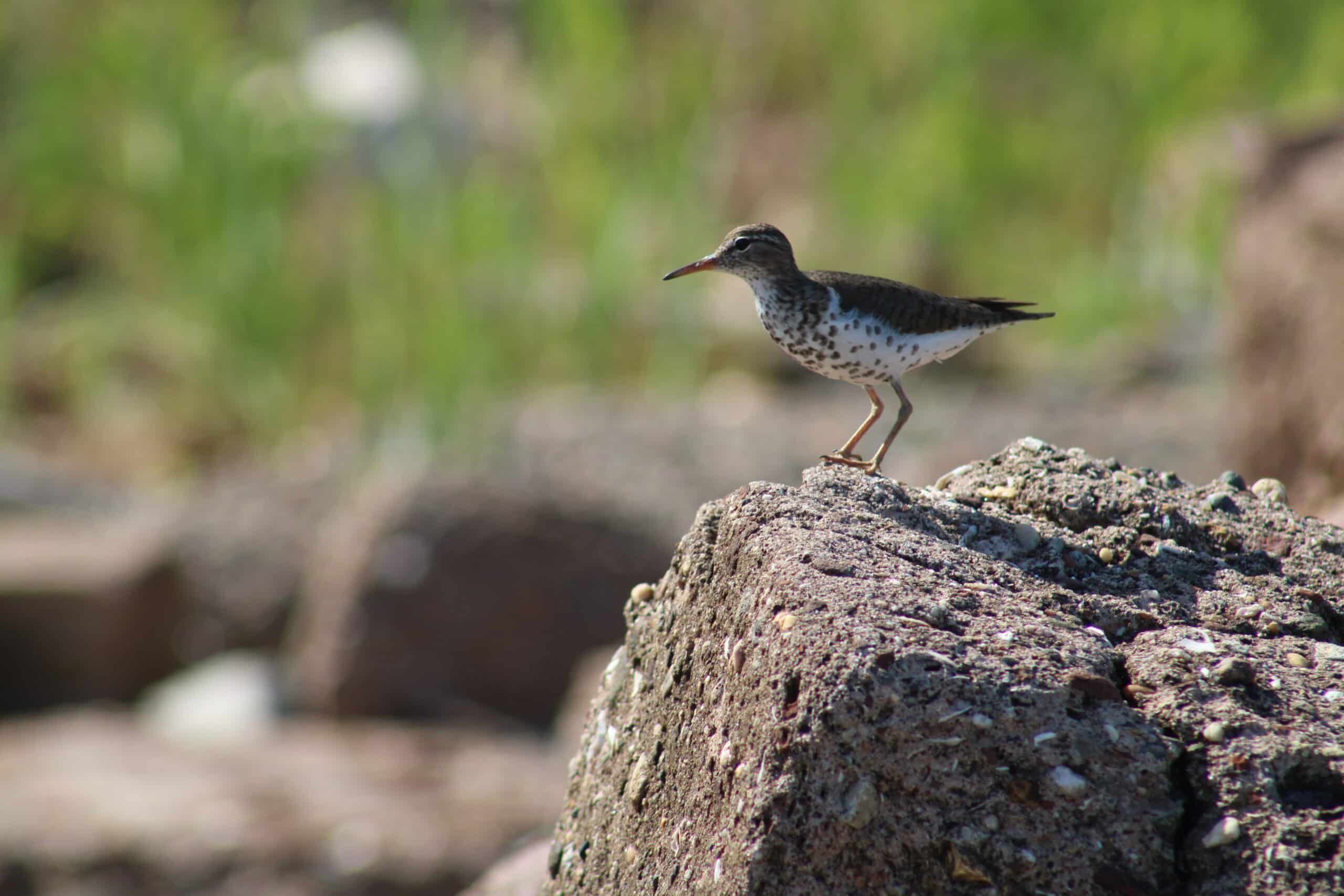
By Natural Areas Conservancy on October 18, 2024


 By Sam Lawson, National Partnerships Coordinator and Emily Walker, Senior Manager of External Affairs
By Sam Lawson, National Partnerships Coordinator and Emily Walker, Senior Manager of External AffairsFall bird migration is in full swing in New York City. Every year, between the months of August and November millions of birds make their way along the Atlantic flyway, blessing us with their breathtaking wingspans and colorful plumage. We’ve consulted our resident birdwatching experts, Sam Lawson and Emily Walker for their city birdwatching tips. Read on below for their advice on which natural areas are the best for birdwatching, and what species you may find this season through your binoculars.
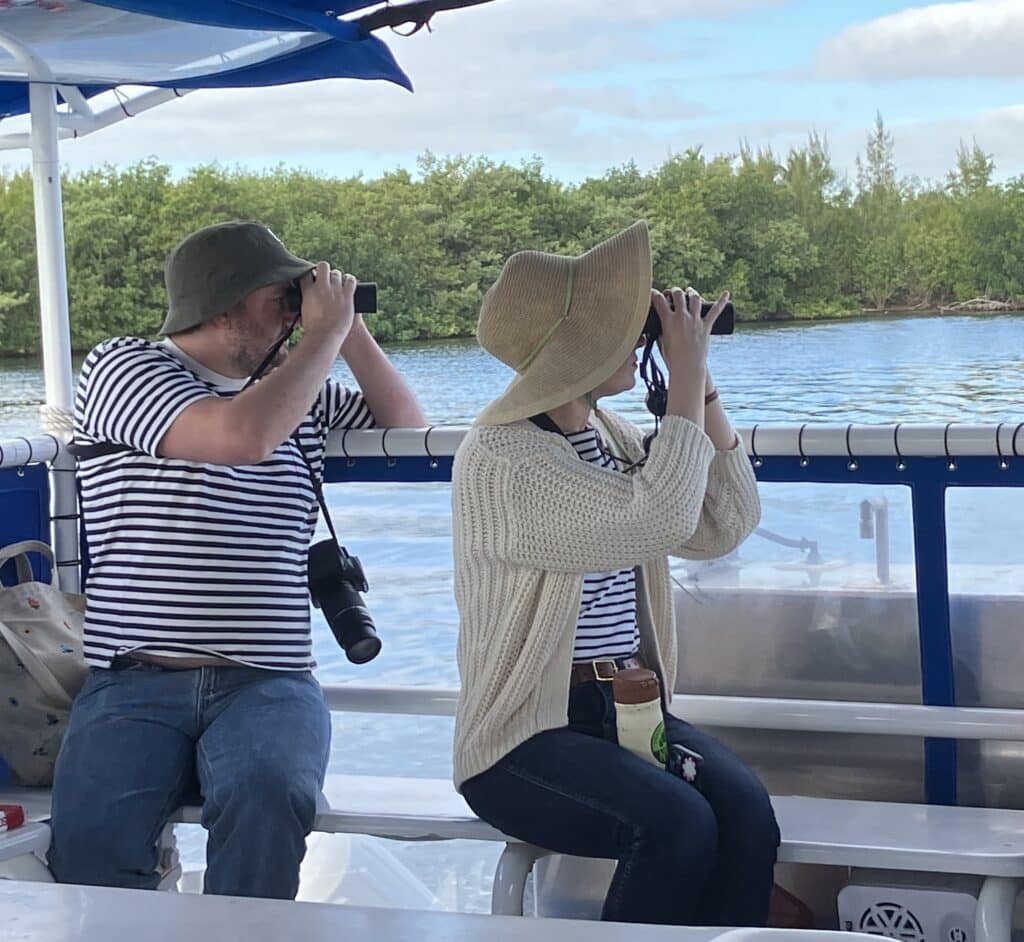
Dynamic birdwatching duo, Sam and Emily on a boat ride in Biscayne National Park, during the 2024 Forests in Cities Annual Workshop.
With a wide variety of habitats easily accessible to the public, Prospect Park offers the chance to see many species in the heart of Brooklyn. In the ravine and adjacent natural areas you could spot migrating warblers including rare species like the Wilson’s, hooded and Connecticut warblers. The woods are home to several species of woodpeckers and birds of prey, especially red-tailed hawks. Take a stroll to the prospect park lake to see a variety of “weird” ducks, regal swans, and migrating geese, even in the winter. You can also watch herons, kingfishers and maybe even an osprey hunt in the lake. If you can’t get enough birding in Prospect Park, walk over to Greenwood Cemetery to continue your birding adventure.
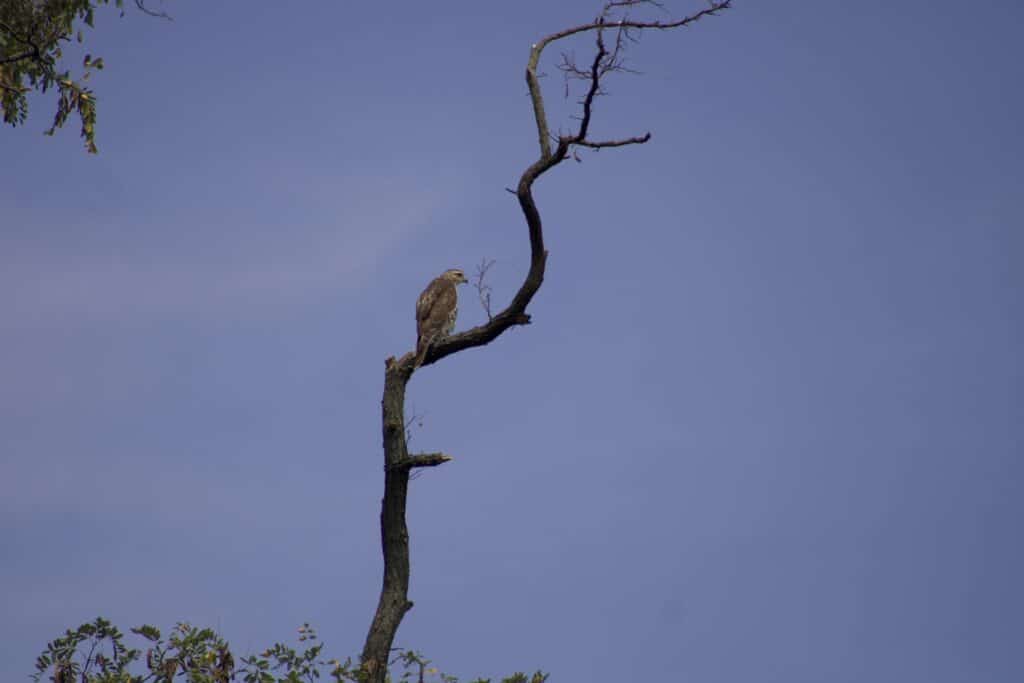
Red Tailed Hawk observed in Manhattan (Photo credit: Sam Lawson)
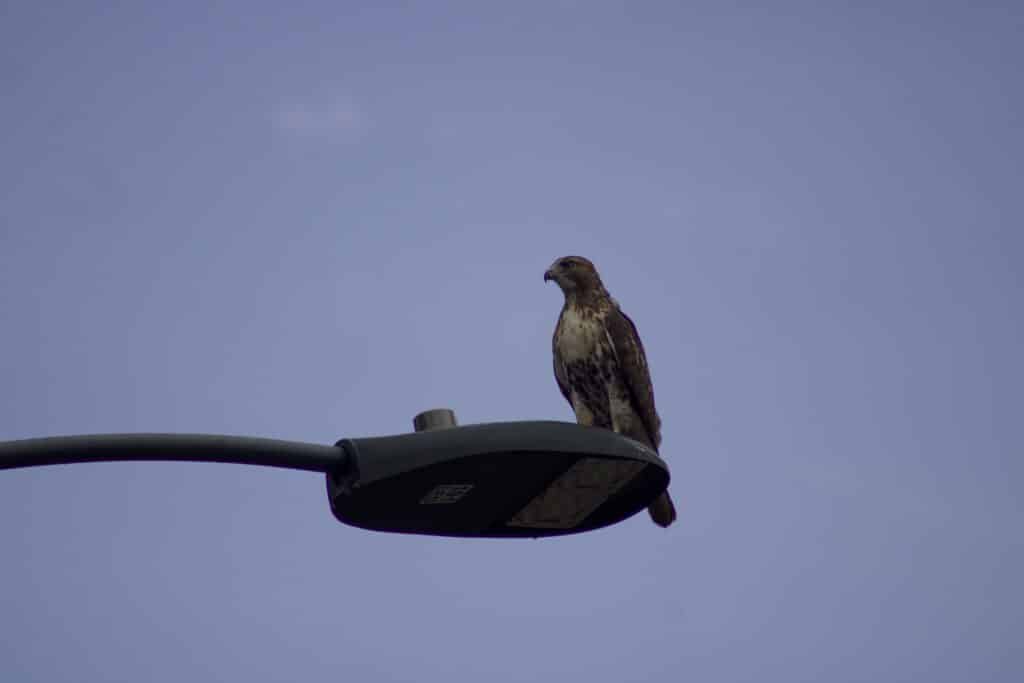
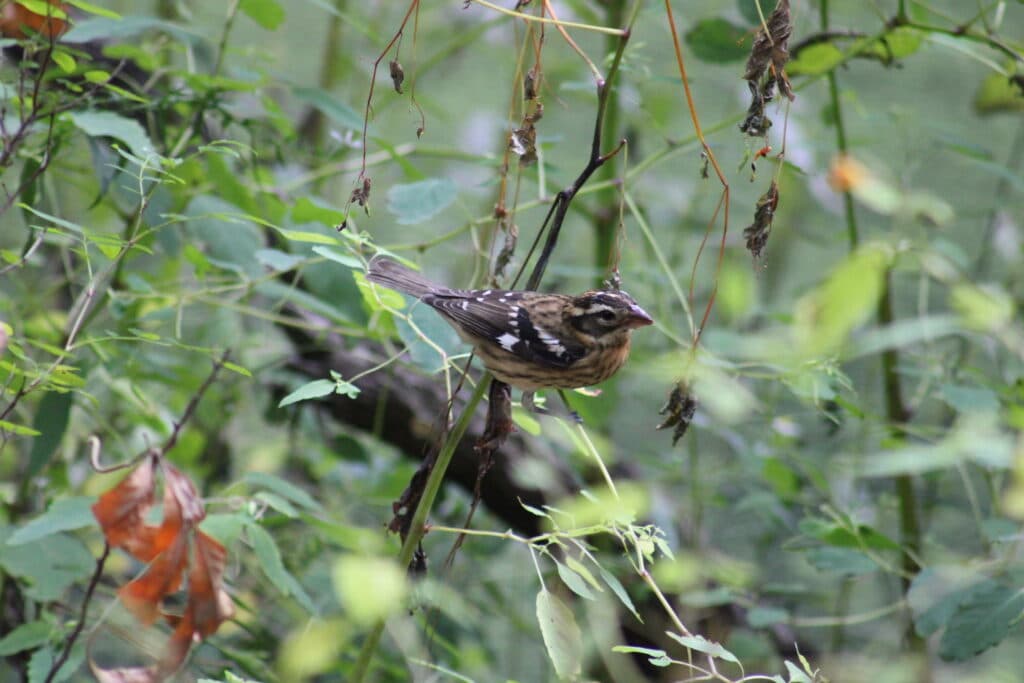
Rose Breasted Grosbeak observed in Manhattan (Photo credit: Sam Lawson)
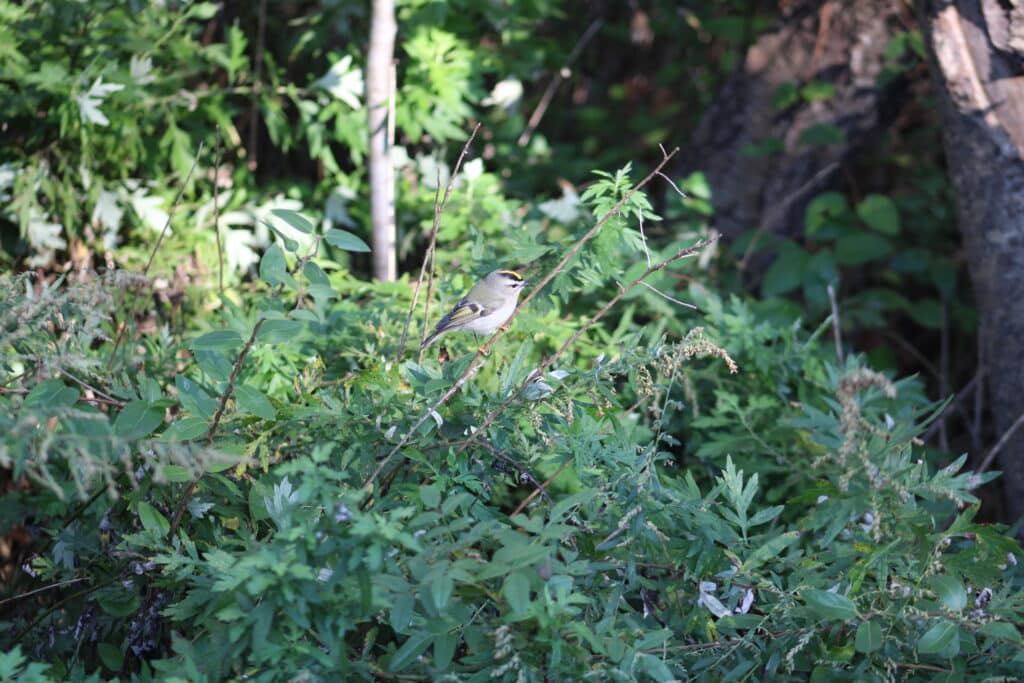
Golden Crowned Kinglet observed in Brooklyn (Photo credit: Sam Lawson)
With Manhattan’s only remaining old-growth forest and tidal salt marsh, Inwood Hill Park is a birder’s paradise. The Overlook Meadow located along the Blue and Orange Trails offers a spectacular view of the Hudson River and the Palisades, and is often a great location to spot Bald Eagles (yes, Bald Eagles in Manhattan!) The forests offer habitat to many full-time and migratory bird species, including warblers, nuthatches, wrens, sparrows, and birds of prey. Manhattan’s only remaining Salt Marsh, provides a wonderful view of the Henry Hudson Parkway Bridge, and attracts many interesting shorebirds, wading birds, and waterfowl. You can visit the newly reopened Inwood Hill Park Nature Center for great views of this special ecosystem, and take advantage of the programming offered by the NYC Parks Urban Park Rangers.

Common Yellowthroat observed in Manhattan (Photo credit: Sam Lawson)
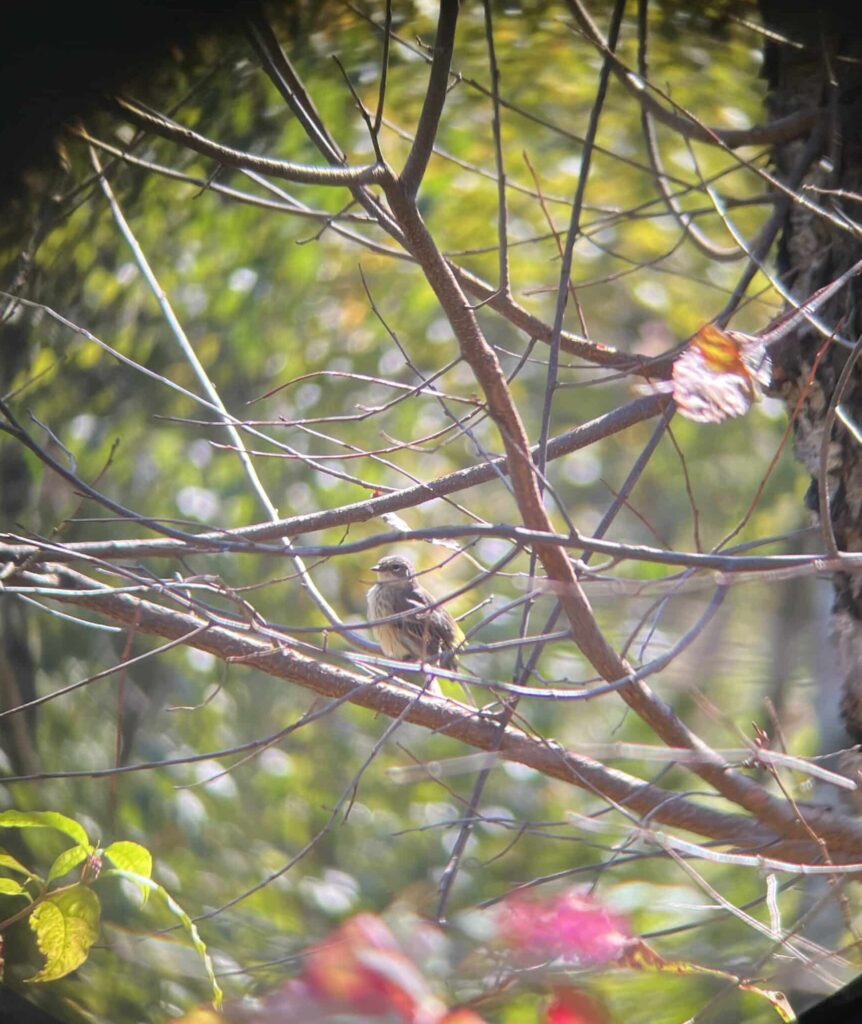
A Yellow-Rumped Warbler, mid-preening in the successional forest along the Ridgewood Reservoir path in Highland Park, Queens. (Photo credit: Emily Walker)
Located along the border of Brooklyn and Queens in Cypress Hills, Highland Park and the Ridgewood Reservoir offer great opportunities for birding year-round. In the middle of Upper Highland Park, the vernal pool natural area is a great location for spotting migrating warblers, kinglets, flycatchers, and thrushes (as well as full-time residents like Red-Bellied Woodpeckers, Northern Cardinals, Blue Jays, and Mallards). The Ridgewood Reservoir is a prime location for birdwatching, and provides year-round and part-time habitat to a large variety of birds due to its various ecosystems. Of the three original reservoir basins, the outer two have been drained for decades, allowing a successional forest ecosystem to thrive. These forest patches attract dozens of migratory bird species, including warblers, woodpeckers, orioles, wrens, and finches. The middle reservoir basin attracts many interesting birds of prey, shorebirds, wading birds, and waterfowl. Recent fall sightings include a Worm-Eating Warbler, American Coot, and Common Gallinule!
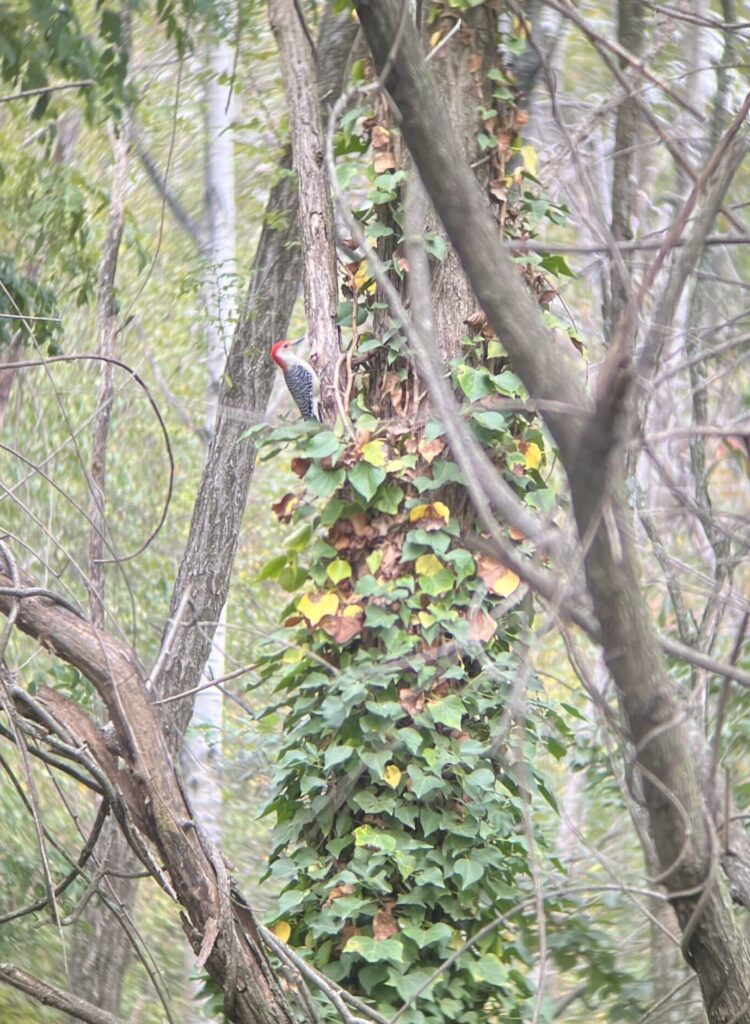
A Red-Bellied Woodpecker in the successional forest along the Ridgewood Reservoir path, Highland Park, Queens (Photo credit: Emily Walker)
The second largest park in NYC, Van Cortlandt Park in the north Bronx offers a variety of habitats perfect for spotting birds. Van Cortlandt Lake is a serene space to observe various shorebirds, wading birds, and waterfowl, and even had a beautiful pair of nesting Green Herons this past summer. Van Cortlandt Park also includes many miles of forested trails, ideal locations for spotting migratory warblers, kinglets, nuthatches, and sparrows. Some recent sightings include a Pied-billed Grebe and Tufted Titmouse. The Van Cortlandt Park Alliance and the NYC Parks Urban Park Rangers often offer nature-oriented programming in the park, including birding walks, which help highlight the diverse ecosystems and wildlife that call the park home!
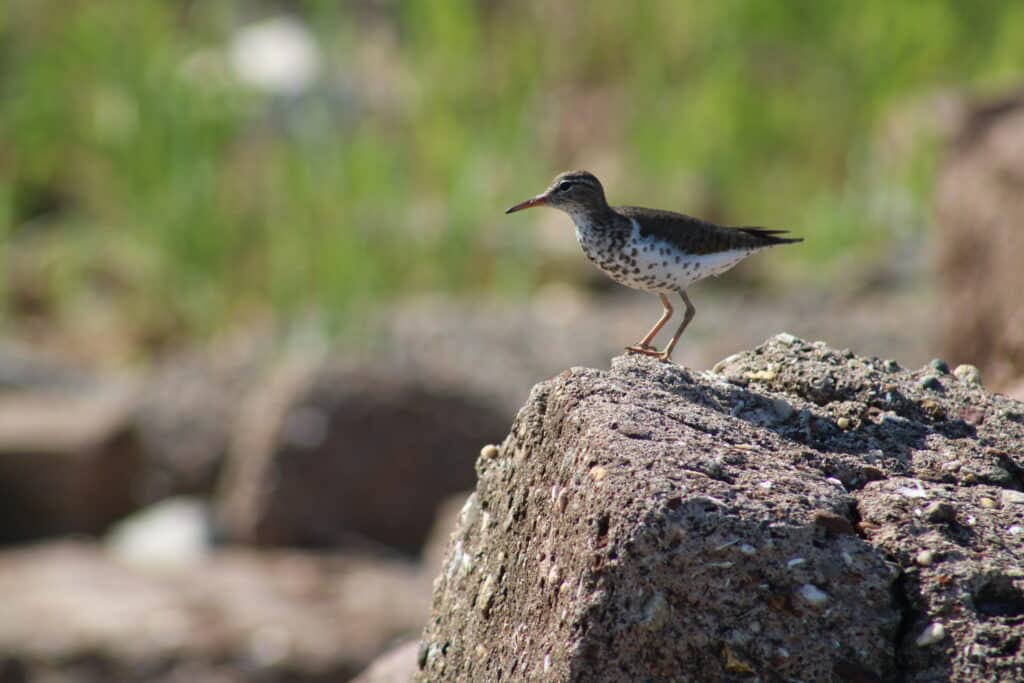
Spotted Sandpiper observed in Staten Island (Photo credit: Sam Lawson)
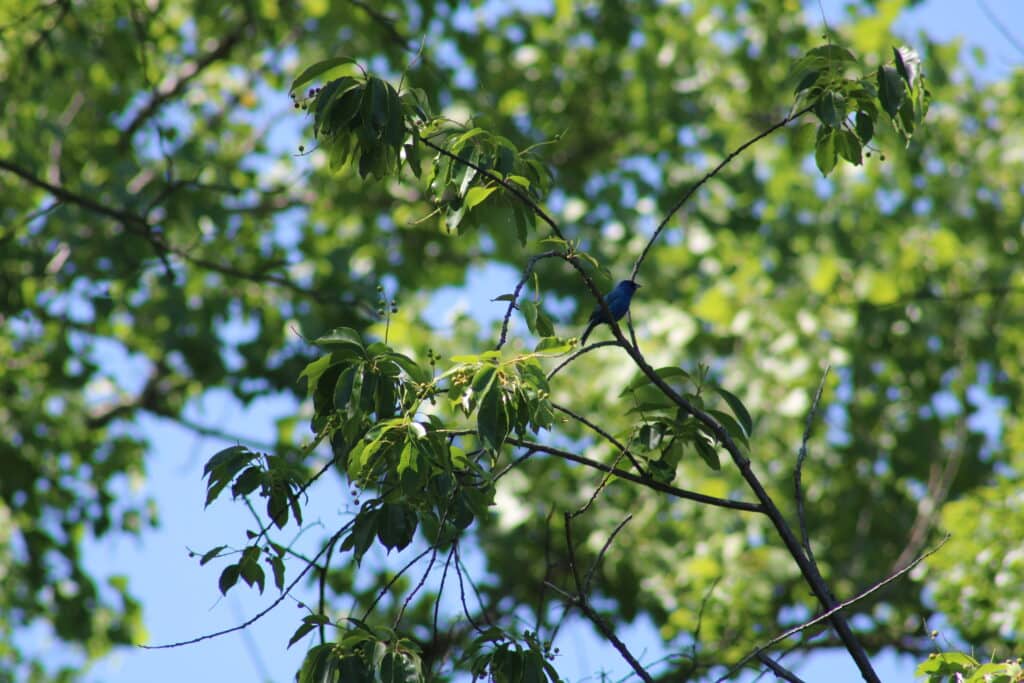
Indigo Bunting observed at Conference House Park (Photo credit: Sam Lawson)
The shore of Staten Island, where the bay and the land meet, is a great place to get the best of both worlds: land and sea. Near the shore, there are many wading birds, like sandpipers, and waterfowl as they follow the coastline south. Scan the waves for loons and grebes–this time of year they come to the sheltered bays of New York City–though you won’t hear their beautiful calls, you can identify them in their winter plumage. In the uplands look out for songbirds in the trees like vireos and indigo buntings. While some species are migrating away, many are just arriving for the winter. Keep an eye out for white-throated sparrows, nuthatches and brown creepers which should be with us until next year. Birding doesn’t stop in the winter!
Looking for more birding hotspots near you? Emily and Sam recommend you download the eBird app to track your own bird sightings, and find local bird reports via the “Explore” function— it’s a great way to see what birds are traveling through your local parks and green spaces in real time! The Merlin Bird ID app also offers a great sound identification tool to help you figure out what birds are around you. If you want to take your birding to the next level, you can check out a bird field guide from your local library. There are many options, so try a few before deciding which visual guide works best for you. Happy birding!